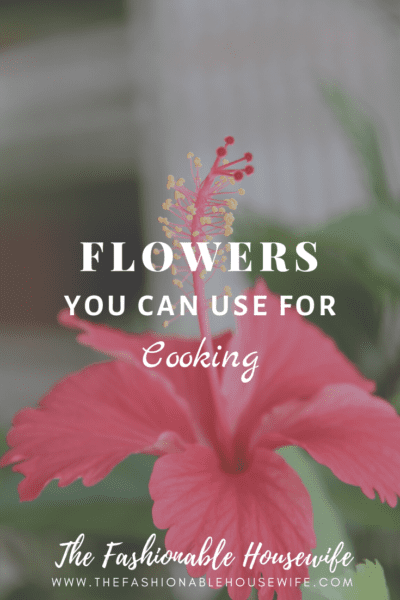
Adding flowers to recipes may be trendy today, but it’s definitely nothing new. For centuries, flowers have been used in cooking for their distinctive colors and flavors. Cultures around the world have suffused their recipes with flowers like roses and saffron.
Fresh, dried, crystallized (sugar-coated) and powdered forms, or infused in cordials, syrups, essences and teas, edible flowers can be found in various forms. Nasturtium, Carnation, calendula, cornflower, dianthus, elderflower, fuchsia, marigold, pansy, pineapple sage, rosella and rosemary flower are some examples.
Flowers are used in limitless culinary roles: as garnishes, in salads, stuffed (zucchini flowers, snapdragons), in omelets, souffles, sorbets, jams, jellies, chocolate and baked goods (lavender scones, anyone?). The list goes on. However, here is a word of caution. Ideally use flowers that you grow yourself or order only from top-notch florists who are known for same day flower delivery in Sydney, so that flowers are local, fresh and crème of the crop.
Roses: Perhaps one of the most prominent floral flavors used widely in cooking, roses reminds one of the flavors of strawberries and green apples. With subtle undertones that range from fruit to mint to spice, roses are sweet to taste.
Though the flavor is more pronounced in the darker varieties, all roses are edible. You can garnish ice cream and desserts with the miniature varieties. The larger petals can be sprinkled on desserts or salads. Dried or fresh rose petals can be used in syrups, jellies, perfumed butters and sweet spreads. Make sure you remove the bitter white portion of the petals before using them.
Carnations: Steep Carnations in your wine, candy, or you can even use them as cake decoration. Cut them away from the bitter white base of the flower and use the surprisingly sweet petals in desserts. Since the 17th century, the French have been using Carnation petals as one of the secret ingredients to make Chartreuse – a liqueur.
Gladiolus: These flowers have a nondescript flavor and taste vaguely like lettuce. But they make palatable receptacles for sweet or savory spreads or mousses. You can also toss individual petals in salads. Do not forget to remove the anthers before using them.
Hibiscus: With a strong citrus overtone, Hibiscus flowers have a distinct Cranberry-like flavor. You can use their slightly acidic petals sparingly in salads or as garnish.
Lilac: These flowers are very fragrant but slightly bitter. The flavor of lilacs varies from plant to plant. With a distinct lemony taste with floral, pungent overtones these flowers are great in salads.
No matter if they are used simply as a garnish or as an ingredient, edible flowers can be a boon for those who like innovative home cooking recipes. But you do not need to be a Master Chef to be able to come up with your version of flower-flavour infused soups, broth salads or desserts. Just remember to use these flowers in moderation for that subtle flavor. Flowers delight our senses in so many ways, it’s not surprising that some flowers can be treats for our taste buds as well.



